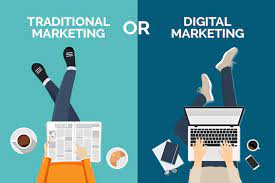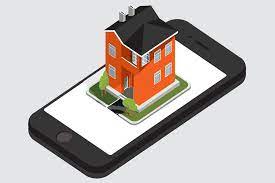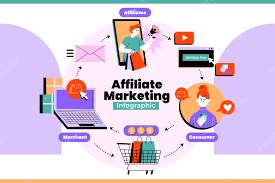
While digital marketing and traditional marketing both have their benefits, there are also some drawbacks to each. When you’re new to the world of digital marketing, it can be easy to jump at the first opportunity that comes your way.
However, it’s vital to make sure you know exactly what you’re getting into before you commit to anything – especially when this involves spending money on advertising with potential outcomes that are difficult to predict.
This guide explores the differences between digital marketing and traditional marketing so you can decide which approach will work best for your business.
The Definition of Digital Marketing
Digital Marketing is a process of marketing products or services using digital channels, such as social media platforms, blog posts, e-mail and online ads. This can include online advertising like search engine marketing (SEM), social media marketing (SMM) and pay per click (PPC) campaigns.
Digital Marketing can also be used to market a company's products or services offline by placing banner ads on websites or sending out direct mail pieces.
The Definition of Traditional Marketing
Traditional marketing is a term that refers to any form of marketing not related to digital media. It usually means advertising in newspapers, magazines, television, or radio. It also includes billboards, posters, flyers, store displays, product packaging, catalogs and mailings.
These different forms of traditional marketing have been around for many years because they are so effective in reaching large groups of people at one time. But as technology has evolved, new ways of doing marketing have come about.
Digital marketing has taken over where traditional methods leave off, making it much easier for small businesses to market their products and services through websites, social media channels and mobile apps.
The Similarities Between Both Types of Marketing
Digital marketing and traditional marketing are both designed to promote products, services, or brands.
They serve different purposes but work in similar ways. Digital marketing is primarily concerned with promoting online presence, such as a company website, blog posts on social media sites like Facebook and Twitter, online advertisements for a product or service through various types of ads like banners or video ads that can be found on various websites.
Traditional marketing has traditionally been used for offline promotion through things like television commercials and radio ads. Both have shifted over time as internet use has increased significantly over the years since its invention by Tim Berners-Lee back in 1989.
The Differences Between Both Types of Marketing
The differences between digital marketing and traditional marketing are largely based on the type of audience they are aimed at.
As a general rule, digital marketing is geared towards younger people who use social media channels like Facebook, Twitter, Pinterest, Instagram, etc., while traditional marketing is targeted at older generations who are more likely to watch TV or read newspapers.
The other difference is that with digital marketing you can measure results much more easily than you can with traditional.
Digital Marketing and Traditional Marketing
Digital Marketing is a form of marketing that uses digital channels, such as websites and social media. Traditional Marketing is a form of marketing that relies on more traditional channels, like television commercials and print ads.
Digital Marketing has many advantages over Traditional Marketing. For one thing, it reaches a greater audience than traditional methods because of the prevalence of mobile devices.
In addition to this, Digital Marketing allows marketers to measure results in real-time and make changes based on what they learn. They can also do things that are not possible with traditional advertising, like targeting potential customers by location or demographic factors.
The cost of digital marketing is typically lower than the cost of traditional advertising due to reduced production costs.
Disadvantages of Digital Marketing and Traditional Marketing
Digital marketing is great for getting your word out quickly and cheaply. But, it has some disadvantages as well. One disadvantage of digital marketing is that you can't see what customers are thinking like you would if they were standing in front of you.
You can't see their facial expressions or hear their tone of voice so it can be difficult to tell how they're feeling about your product or service. In traditional marketing, a salesperson talks to a customer face-to-face and can easily read their reactions.
Another disadvantage of digital marketing is that many people find ads annoying on social media sites such as Facebook and Twitter. They've learned over time not to click on ads because they know there will always be an annoying popup ad just when they think they might want to check out the ad content.
Which One Should My Business Use?
It really depends on your business. There are many benefits to both digital marketing and traditional marketing, so it is important to think about which one will work best for your business.
The most important thing is that you do something, because sitting on the sideline will not get your company anywhere!
However, if you're thinking about going into a new market or trying a new advertising technique, talk to an expert who can help figure out what would be best for your business.
Conclusion
In conclusion, digital marketing is a cost-effective way to get your product or service in front of customers. With traditional advertising, you have to find a place that will let you advertise and hope people are interested in what you're selling.
With digital marketing, your ads can be targeted to particular audiences so they're more effective. If you're thinking about starting a business, look into digital marketing as an option.























